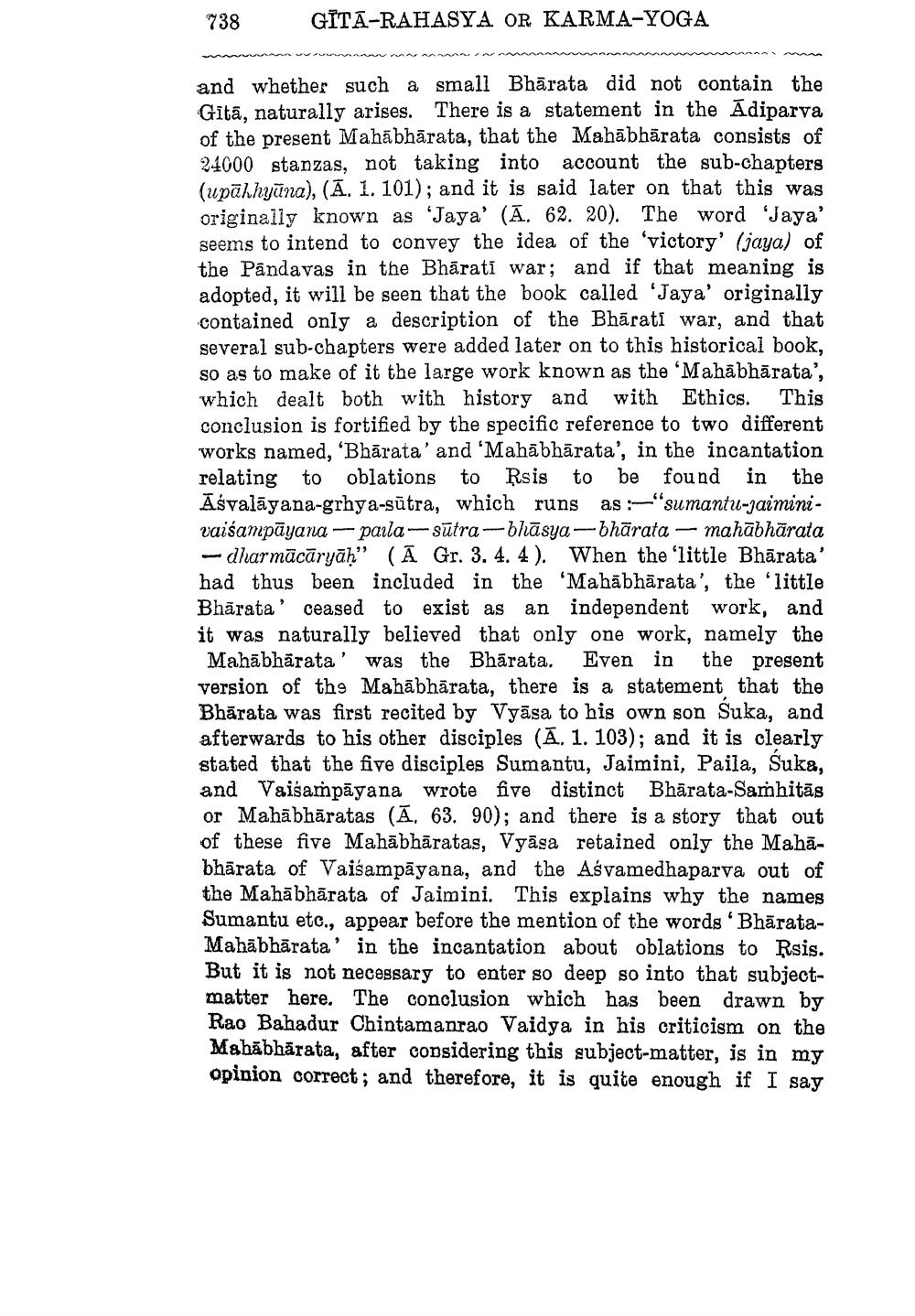________________
738
GÍTA-RAHASYA OR KARMA-YOGA
and whether such a small Bhārata did not contain the Gītā, naturally arises. There is a statement in the Adiparva of the present Mahābhārata, that the Mahābhärata consists of 24000 stanzas, not taking into account the sub-chapters (upalhyūna), (A, 1. 101); and it is said later on that this was originally known as 'Jaya' (A. 62. 20). The word 'Jaya' seems to intend to convey the idea of the 'victory' (jaya) of the Pandavas in the Bhāratí war; and if that meaning is adopted, it will be seen that the book called 'Jaya' originally contained only a description of the Bhārati war, and that several sub-chapters were added later on to this historical book, so as to make of it the large work known as the 'Mahābhārata', which dealt both with history and with Ethics. This conclusion is fortified by the specific reference to two different works named, 'Bhārata' and 'Mahābhārata', in the incantation relating to oblations to Rsis to be found in the Āśvalāyana-grhya-sūtra, which runs as :- sumantu-jaiminivaišampāyana --- paila --Sūtra-bhāsya-bhārata - mahābhārata - dharmācāryāh" (A Gr. 3. 4. 4). When the 'little Bhārata' had thus been included in the 'Mahābhārata', the little Bhārata' ceased to exist as an independent work, and it was naturally believed that only one work, namely the Mahābhārata' was the Bhārata. Even in the present version of the Mahābhārata, there is a statement that the Bhārata was first recited by Vyāsa to his own son Suka, and afterwards to his other disciples (A. 1. 103); and it is clearly stated that the five disciples Sumantu, Jaimini, Paila, Suka, and Vaišampāyana wrote five distinct Bhārata-Samhitās or Mahābhāratas (Ā, 63. 90); and there is a story that out of these five Mahābhāratas, Vyāsa retained only the Mahabhārata of Vaišampāyana, and the Aśvamedhaparva out of the Mahābhārata of Jaimini. This explains why the names Sumantu etc., appear before the mention of the words 'BhārataMahābhārata' in the incantation about oblations to Rsis. But it is not necessary to enter so deep so into that subiectmatter here. The conclusion which has been drawn by Rao Bahadur Chintamanrao Vaidya in his criticism on the Mahābhārata, after considering this gubject-matter, is in my opinion correct; and therefore, it is quite enough if I say




